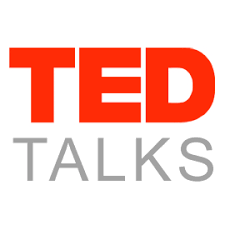This was the second year implementing 20 Time Projects here at PHS, and based upon some of the challenges we faced the first time around, many changes were made to this year's journey. I credit incredible educators such as
Karl Lindgren-Streicher,
Kevin Brookhouser and
Kate Petty for sharing great ideas and providing inspiration to keep pushing forward with this concept.

Here's a rundown of this year's 20 Time Project at PHS:
Introducing 20 Time (September)
I introduced the project with
this 20 Time Presentation that provides some background regarding creativity, motivation, and concept of "20 Time." This year I also provided students with
20 Time Guidelines to give them a better sense of the expectations and timeline for the project.
This year's project also had two basic requirements:
1. Your project provides a solution to an existing problem.
2. Your solution benefits a particular community or people.
*** In other words, your project will help/affect more than just yourself.
Brainstorming Sessions (September - October)
Last year, students had a particularly difficult time getting started. I therefore decided to help students think about different topics and interests with
this Brainstorming form. It not only helped them organize their thoughts, but also provided me with some insight regarding the direction that they were heading.
Maintaining Focus (October - November)
Once most students had settled upon an idea and began working on their proposals, I realized that many were not making the most of class time. To help them stay on task and monitor their progress, students began writing
weekly reflections. This simply asked students to record what they had accomplished that week as well as what steps needed to be taken before the next 20 Time day.
Project Proposals (December)
Before diving too deep into the projects, I had students develop an in-depth
Project Proposal document. This required students to discuss their passion, needs and opportunities, audience, timeline, final product, and equipment needs.
Students also had to
develop a pitch video. They started by completing this
"1 Minute Pitch" video form. Their responses were then written out into a brief script. Before they recorded, I also showed students a few
Kickstarter videos so that they would understand the concept of "pitching" an idea.
I feel that these two assignments helped students hone their ideas and create a road map for moving forward with the project. Creating the pitch videos also helped drive home the point that this project is not just about themselves, but some larger community of their choosing.
Connecting With Experts (January - February)
As part of the project, I urged students to reach out to experts in the field related to their topic. In this
Interview Proposal form, students had to indicate two people that they would like to interview. Students also had to include a brief description of how each person's experience, expertise, and insights would assist their project. I then helped the students connect with each person via email, phone call, or GHO.
Inspirational Videos
Around this time of year, many students began to hit a wall. Some were "stuck," some were losing interest in their project, and some were unsure of where their project would ultimately end up. That's when I began starting each class with a quick, inspirational video. I made a point to include some TED talks since that is how each group was going to present in June. I searched for resources (such as
this Pinterest board by Terri Eichholz) to curate videos that I thought were especially creative and inspirational. Here is a screenshot of the videos that we viewed throughout the year.
Final Presentations (May - June)

Although I tried to stay as "hands off" here as possible regarding the content and style of their final presentation, I did offer students
this guide of questions to be addressed during their talk. A few students also created this
TED Talk Tips presentation based upon the book
How to Deliver a TED Talk. For students who could not deliver their presentation live to the class, they were given the option of either creating a video or presenting before or after school.
I was pleased with the variety of projects this year and how well many students followed-through with their plans. Here is a sampling of what they created:
- Product design for a device that monitors the vital signs of an unborn child and streams the information to the mother's Smartphone.
- Relay for Life community campaign to raise awareness for the cause and increase community participation.
- E-Book that provides inspirational stories for teens that are going through difficult times.
- How-to guide for tech-savvy students interested in creating their own "home server."
Overall, this year's 20 Time Project was much more successful. As for future iterations, I'm looking forward to reading
Kevin Brookhouser's upcoming book and implementing some new strategies to increase student buy-in from the start and provide more inspiration and targeted support throughout the project.

































